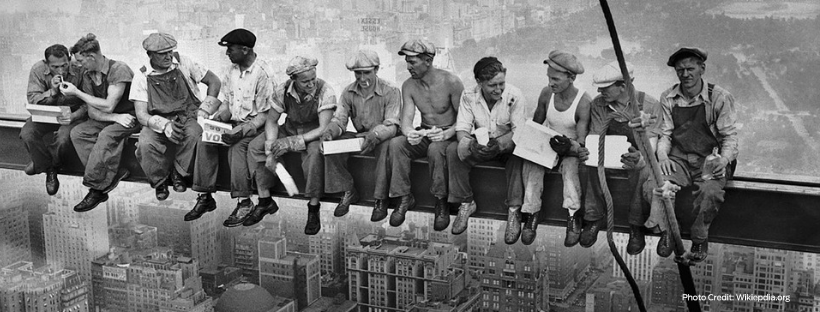An Australian History of the Tradie
The Tradie is quintessentially Australian. Starting their day at the crack of dawn, these true-blue Aussies are as hardworking as they come. The modern Tradie makes up almost a third of our workforce, from Brickies to Chippies and trusty Sparkies, these guys are well-educated professionals who build the infrastructure of today and tomorrow.
Step back a few hundred years and you’ll be hard pressed to find a high-vis wearing Tradie but you will find the same grit Australians are well known for. Discover how times have changed in the last 200 years.
The Golden days
In the 1850s, British tradesmen made the journey to Australia in search of gold and the opportunities it promised. Many were Stonemasons, Bricklayers and Carpenters.
These enterprising men could work for themselves, if they owned a horse-drawn cart, which was somewhat unheard of in Britain. One of those settlers was James McEwan, claims to have started the world largest ironmongery (hardware) business – of which was later (and by that we mean in 1993) absorbed by Bunnings.
Eight hour days .. delightful!
In those days, the workday was 10 hours long and the workweek included Saturday morning.
A turning point in the 8-hour day movement, began on 21st April 1856. Melbourne Stonemasons walked off the job to protest against employers’ refusal to reduce their working hours.
This standoff between worker and employer soon resolved, with Employers agreeing to an eight-hour work day for the Stonemasons. This marked Australia as one of the most progressive labour environments of the 20th Century.
The concept of ‘piece work’ where you are paid by work produced instead of time spent on the job was yet another controversy of the 19th Century. Although, the nature of a competitive market meant workers ended up being paid less.
Learning by doing
A new format of learning was the focus in the early 1900s. In 1901, the Swedish sloyd was introduced to woodworking training, targeting the younger school students.
After World War II, the Commonwealth took up a prominent role in the training of Tradesman. The Department of Labor and National Service published Trade text books on plastering, painting, bricklaying and so on. This was a crucial step in the education of the workforce at the time as all other texts were British or American and not geared toward Australian conditions.
Tools of the trade
In times gone by Carpenters faced the almighty challenge of framing a roof with the correct rafter angles and lengths. Apprentices had to make small scale models before each job was started.
Even the process of joining boards was not a simple task – where boards needed to be heated with irons to prevent the glue congealing. The process of which I’m sure we have long forgotten in today’s envrionment.
While carpenters wore the traditional white apron, Joiners were considered of higher status. So they could arrive in a bell topper that was later stored in a special box on the bench, and replaced with a white cap and the standard apron.
Reinforced concrete marked a great advancement in the Concreting trade although still required a surprising amount of wheel barrow power to place.
Old dog, new tricks
The 20th Century called for advancements to Apprenticeships and Training. The first key change came in 1985 when Traineeships were introduced. This opened the doors to a larger scope of occupations available under this model.
The next advancement hit in the mid 1990s when government started offering incentives to employers to help offset the costs of Apprenticeship and Traineeship training.
Image sourced from: https://en.wikipedia.org/wiki/Lunch_atop_a_Skyscraper
Info from: https://www.insuranceline.com.au/life-health-wealth/articles/history-of-tradies-in-australia




Comments are closed.